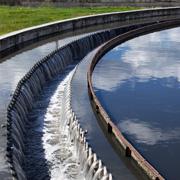Smog or Fog? The Dark Side of Industrialization
TAU researchers offer a grim forecast for air quality in the Holy Land. Having developed definitive measuring techniques based on NASA satellites, they found air pollution on the rise in Tel Aviv and other megacities around the world.
Despite massive haze clouds enveloping Tel Aviv and noticeable increases in pollution-related respiratory and cardiac diseases, some officials continue to deny that air pollution is a growing concern in Israel. A new TAU study on global air quality – spearheaded by Prof. Pinhas Alpert, head of the Porter School of Environmental Studies – finally puts this debate to rest. Turning to three NASA satellites, Alpert’s team surveyed air pollution trends in 189 global megacities – urban centers with populations greater than 2 million people – over an eight year period. Their study definitively proves which countries throughout the world are decreasing pollution levels and which ones are not. “Now, if some politician comes and claims that he reduces pollutions, we don't need to argue, we just look at the data,” maintains Alpert.
Results from the satellites clearly show increased air contamination in the megacities of the Middle East, India, North China and Central Africa. They found the Tel Aviv “urban halo” had become slightly denser, with a 5.7 percent increase in particles. Interestingly, Portland, Oregon, topped the charts in aerosol concentration, with an average rise of 53 percent; this is most likely due to recent fires in northwest USA, which have released large amounts of carbon aerosols. Seattle ranked third. One of India’s largest cities, Bangalore, experienced a 34 percent rise in aerosol concentration.
Alpert attributes worsening air quality in megacities around the world to population, traffic, industrialization and energy use increases. He believes it is critical for countries to control and monitor their largest cities’ air pollution because, within a week, emissions can be transported halfway around the world – a clear example of how the local can impact the global. These pollutants are known to affect health, regional ecosystems, visibility and climate change. When asked about the next stages of his research, Alpert responds, “We are currently in the process of trying to differentiate between trends of natural aerosols from trends in man-made pollution like from industry and vehicles.” This information will help strengthen his case about man’s ever-growing ecological footprint.
Alpert’s study did reveal some decreasing trends in aerosols. Some cities in Europe, the United States and South-East Asia reduced air pollution levels from 2002 to 2010. Houston, Texas, showed the biggest decrease, at 52 percent, and New York dipped by 13 percent. These cities have taken active steps to reduce the amount of contaminants in the air. Alpert hopes that these greener cities will serve as an example to the rest of the world, inspiring those who have yet to clean up their communities to push for environmental reforms.
Why use three satellites? “Because in Jewish tradition, judges don’t decide cases alone. There must be a minimum of three. You need a majority opinion,” Alpert explains. Each NASA satellite was built with different methodologies and therefore with varying advantages and shortcomings in measuring aerosol levels. In order to provide the most accurate picture of pollution trends, Alpert’s team then compared and contrasted what all three satellites found to be the same and different.
“This is a new, useful method, because by merging the data from three imperfect sensors, their flaws are counterbalanced. In the cases where the three sensors show differing signs of pollution levels, additional research is required,” says Alpert, who worked in collaboration with Dr. Pavel Kishcah and master’s student Olga Shvainshtein of TAU’s Department of Geophysical, Atmospheric and Planetary Sciences, Raymond and Beverly Sackler Faculty of Exact Sciences. Their study was recently published in the American Journal of Climate Change.





